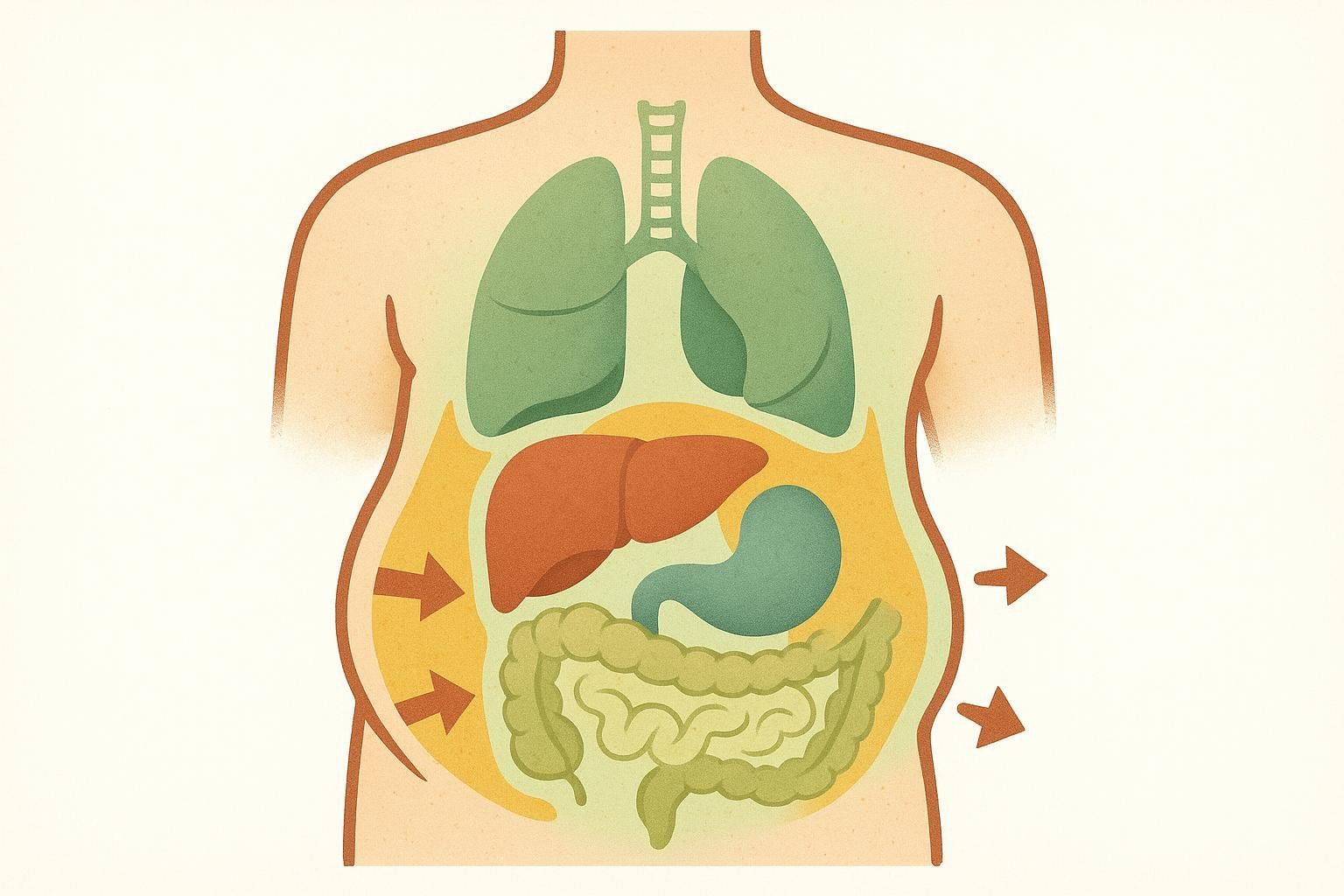TRT Before & After: Month-by-Month Guide to Body Composition Changes

TRT Before & After: A Month-by-Month Guide to Realistic Body Composition Changes
NOTE: Testosterone replacement therapy (TRT) is a prescription medical treatment. This article is for educational purposes and should not replace individualized guidance from a qualified healthcare professional.
Why “Before & After” Matters—And Why a Mirror Isn’t Enough
When people google TRT before and after, they’re looking for evidence that treatment works. How fast can energy, libido, and physique change when testosterone returns to normal?
The challenge: selfies and bathroom scales don’t tell the full story. Visuals miss the metrics that really move the health needle—lean muscle, visceral fat, bone density, and metabolic health markers.

That’s exactly where DEXA body composition scans shine. A DEXA breaks down your total mass into fat, lean tissue, and bone with medical-grade precision—and those numbers change long before friends notice your “after” photo.
Clinical research using DEXA confirms TRT can:
- Increase lean body mass (LBM) by roughly 1–3 kg within six months, according to a 2018 meta-analysis of 34 randomized placebo-controlled trials involving middle-aged and older men.
- Reduce total and visceral fat—a 2016 randomized crossover study documented significant organ-fat loss after six months of physiologic dosing.
- Improve bone density, with year-long therapy raising mineral content in multiple skeletal sites as outlined in a 2024 review by Harvard Health.

Want a primer on testosterone physiology first? Check out Understanding Hormonal Health in Men: Testosterone and Beyond.
TRT Before and After: A Realistic Month-by-Month Timeline
Individual response varies, yet many endocrinologists see a predictable pattern when doses are dialed in and lifestyle boxes are ticked (sleep, nutrition, training). Below is a month-by-month roadmap highlighting possible outcomes.
| Time Point | Hormone Trend | DEXA-Visible Changes | How You’ll Likely Feel |
|---|---|---|---|
| 0 Weeks – Baseline | Total T ≤ 300 ng/dL | Higher body-fat %, low lean mass, possible osteopenia | Low energy, brain fog, reduced libido |
| 4 Weeks | Serum T begins climbing toward the normal range (often 500–800 ng/dL, but varies) | Minimal LBM increase (< 0.5 kg); visceral fat unchanged | Better mood & drive; subtle strength bump |
| 8 Weeks | Levels steadier with each injection/gel cycle | +1 kg LBM; −0.3 kg total fat | Workouts recover faster; morning erections return |
| 12 Weeks (3 mo) | T levels stabilizing within target range (≈ 500–800 ng/dL) as dose is optimized | +2 kg LBM; −0.7 kg fat; visceral fat index down 5 % | Noticeable muscle fullness; endurance up |
| 24 Weeks (6 mo) | T levels consistently maintained in optimal therapeutic range | +3 kg LBM; −1.5 kg fat; bone density up 1–2 % | Plateau in “wow” effect; steady vitality |
| 52 Weeks (12 mo) | T levels stable within long-term maintenance range | +3–4 kg LBM; −2–3 kg fat; visceral fat down 10–15 % | New physique “set point”; energy normalized |
Data for this timeline draws on peer-reviewed research—including a 2018 meta-analysis of testosterone trials, a 2016 randomized crossover study on visceral fat, and a classic 1996 strength-training crossover trial.
Key Takeaways

- Lean tissue climbs first, often before the scale moves.
- Visceral fat drops later, typically after month 3 when metabolic rate and insulin sensitivity improve.
- Bone-density gains need at least six months but pay off in fracture protection.

Maximizing TRT Results: Training & Nutrition Strategies
- Progressive-overload strength training—TRT amplifies muscle-protein synthesis, but the stimulus must be there.
- Protein target: 0.8–1.0 g per lb of goal bodyweight. For a deeper dive into setting protein goals, see The Protein Primer.
- Sleep 7–9 hours—nighttime REM surges growth hormone for recovery.
- Quarterly DEXA + RMR testing—fine-tune calories with real data, not guesswork. See BMR Calculator: Using it for Metabolic Insights.
- Lifestyle still matters—alcohol, stress, and ultra-processed foods blunt the anabolic edge.

FAQ: Fast Answers for Curious Minds
How long does it take to see results from TRT?

Most men report higher energy and libido within 2–4 weeks. Body-composition shifts—like measurable muscle gain and fat loss—typically become DEXA-detectable around 8–12 weeks, then compound for the first year.
What are the downsides of TRT?
TRT is generally safe when medically supervised, but potential risks include:
- Erythrocytosis (high red-blood-cell count)—may thicken blood; routine labs and possible dosage reduction or blood donation mitigate this.
- Acne or oily skin—due to higher androgen levels.
- Sleep apnea exacerbation in predisposed individuals.
- Fertility suppression—exogenous testosterone can lower sperm production; discuss hCG or alternative protocols if family planning.
- Gynecomastia (breast tissue growth)—rare, often tied to estrogen imbalances and treatable.
- Cardiovascular or prostate concerns—evidence is mixed, but staying within physiologic ranges and undergoing regular screening greatly reduces risk; see the latest Harvard Health review.
Will I lose belly fat on TRT?

You can—but only if lifestyle aligns. Controlled research documents visceral (belly) fat reductions of 5–15 % over 6–12 months when TRT is paired with regular resistance training and a moderate calorie deficit, as demonstrated in the 2016 study linked earlier. A DEXA scan quantifies visceral fat, so you’ll know whether those inches are truly melting away.
Is TRT like steroids?
Anabolic-androgenic steroids (AAS) used by bodybuilders often involve supraphysiologic doses—far above what the body naturally produces. TRT, by contrast, aims to restore hormones to the mid-normal range (≈ 500–800 ng/dL total testosterone). Properly dosed TRT can deliver health and quality-of-life benefits without the extreme muscle bulk—or the same severity and spectrum of risks—seen with steroid abuse, though it still carries its own potential side effects as noted above.
Your Next Step: Get Data, Not Guesswork
If you’re considering TRT—or already on it—start with objective baselines. A BodySpec DEXA scan delivers:
- Regional fat & lean-tissue breakdown (arms, legs, trunk)
- Visceral-fat score (critical for heart and metabolic health)
- Bone-density snapshot
Book a scan, follow up every 90 days, and turn your before and after into actionable graphs instead of vague photos.
Ready? Find a DEXA location near you →
Disclaimer: BodySpec provides non-diagnostic imaging but does not prescribe or manage TRT. Consult a licensed clinician for individualized treatment.


